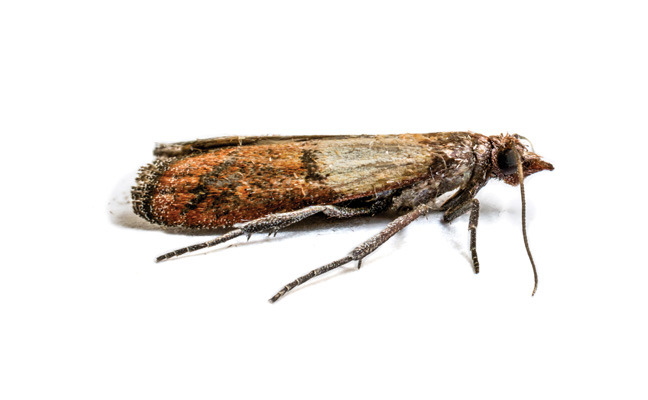
PHOTO: STOCKFOTOCZ/ISTOCK / GETTY IMAGES PLUS/GETTY IMAGES
QUESTION:
A commercial client is not only struggling with stored product pest (SPP) issues, its team is demanding to know why it’s happening and whose fault it is. What can I tell them without getting pulled into speculation and their workplace dynamics? —WAITING AND WORRIED
ANSWER:
There really isn’t a way to accurately determine where a SPP infestation started in most cases, yet clients often are really interested in trying to find out who is to blame. It’s better to focus instead on what you can see in front of you, and work with the client to eliminate conditions in the facility that will support an infestation, rather than getting drawn into speculation.
The SPP category includes several species of beetles, weevils and moths. In many cases, rodents also should be considered a member of the category. They can attack many types of foods — whole grains, flour and flour products (such as cake mixes and noodles), dried fruits and meats, rice, beans and nuts are particularly susceptible. To put the problem in perspective, it is estimated that globally, 25 percent to 33 percent of stored foods are lost to insect pests annually, with rodents claiming another 20 percent or more.
Clients may report holes, tears or damage to food packaging and containers, as well as larvae, pupae and/or adults in or around food products. They also may notice webbing on products and boxes, or on shelving and other areas close to food. When this happens, instruct clients to seal all infested products tightly in plastic bags. They should then place the bags into a freezer, an outside container, or any other location that is segregated from other food products and food storage areas, where the evidence can be saved for your inspection.
Whether the client is a small restaurant, a mixed goods warehouse, or a large food processor, it’s important to act fast because infestations can become widespread quickly, and may have multiple sources, making the pests extra challenging to control. Once you identify the pest(s), the impacted product(s) and any contributing storage practices or sanitation conditions, have the client remove all infested products, and instruct the client on how to properly clean the entire storage area.
Make sure to offer sanitation and storage practices guidance at each visit to help prevent future infestations. Advise clients to avoid storing food for long periods in original packaging, as many insect pests can penetrate cardboard, plastic or even foil. Tell clients to be sure to keep dried foods in containers with tightly fitting lids, and to always use containers that are appropriately sized for the contents. Instruct them to check containers frequently for cracks, damage and loose seals, and to use products before they expire, consuming older products first. Stress the importance of keeping food storage areas organized and clean.
Remind clients to always check food deliveries as soon as they arrive for holes or tears in the packaging, or for other signs of pests or damage. Pheromone lures can be very helpful in alerting you to commercial pest issues, while providing good specimens for identification confirmation.
Always ask commercial clients what kind of food products are present so you can get a better understanding of potential problem pests. Once you know what the vulnerabilities are, you can design a monitoring program to help protect them.
For some industries, SPP can result in health code and regulatory violations and fines. In severe cases, SPP can even become public health issues. With that in mind, it’s always important for you to take quick action and preventive steps if you suspect activity.
Email your questions about insect identification and pest management technologies to pmpeditor@northcoastmedia.net. Your questions most likely will be printed and answered in one of Pest Management Professional’s upcoming columns.
Baldwin is director of technical, training and regulatory services for Terminix Commercial. He may be reached at dbaldwin@terminix.com.
The post Focus on SPP solutions, not finger-pointing appeared first on Pest Management Professional.
from Pest Management Professional https://www.mypmp.net/2020/02/04/focus-on-spp-solutions-not-finger-pointing/
Sacramento CA
No comments:
Post a Comment